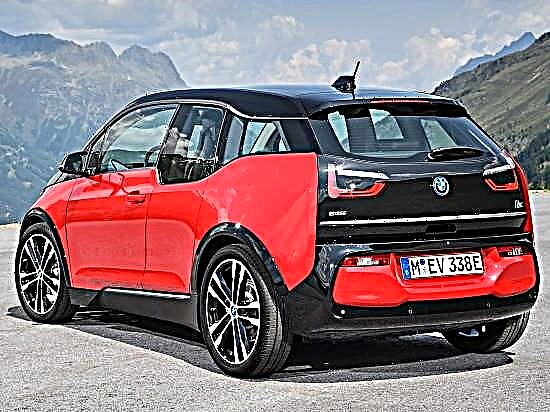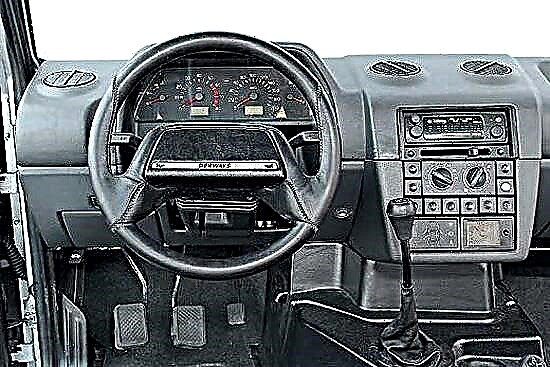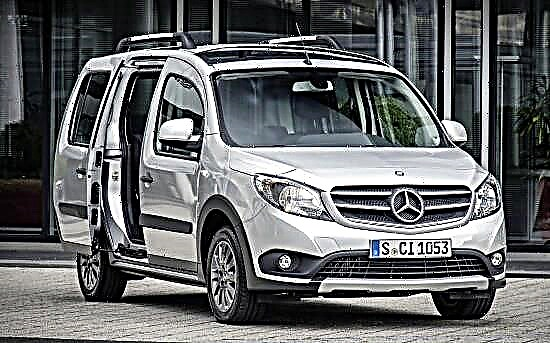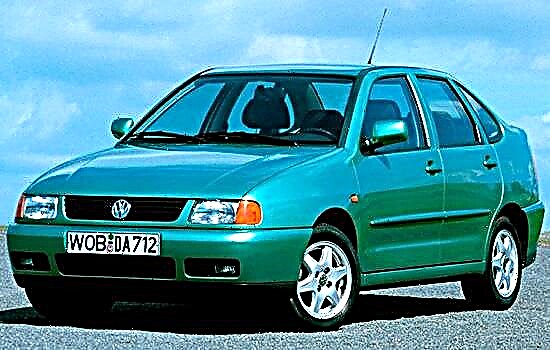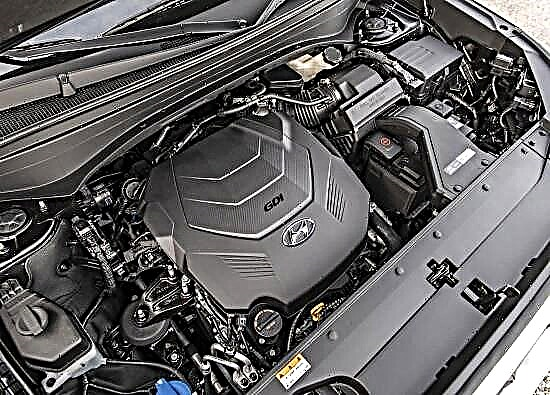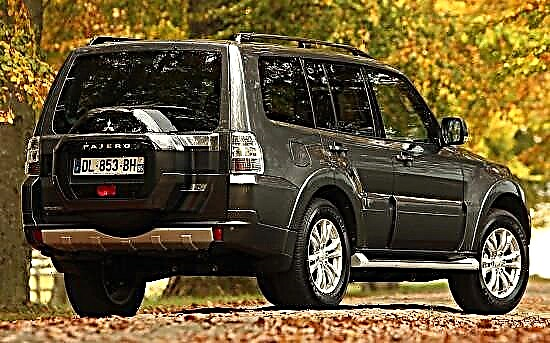This car is truly legendary - the history of this SUV dates back to 1982, but the fourth generation in question entered the conveyor in 2006 ...

Since then, the "fourth Pajero" has been repeatedly updated - it underwent the first noticeable modernization in 2011.

And in 2014 (at the Moscow International Motor Show) the premiere of the Mitsubishi Pajero "2015 model year" took place - after which it almost immediately entered the salons of the official Russian dealers of the brand.

Mitsubishi Pajero is a classic brutal SUV that stubbornly refuses to move to modern design standards. The exterior of "Pajero 4" is quite simple and unpretentious, but at the same time it evokes a feeling of structural reliability and confidence in superiority over other cars - due to massive design elements, large rims and high ground clearance.
As part of the 2014 restyling, he received: new rims, a new design of the radiator grille, as well as a front bumper with integrated LED daytime running lights and new fog lights, and at the rear, the designers refreshed the spare wheel cover and ... this is the end of the car's external transformations.

The length of the "fourth Pajero" is 4900 mm. The wheelbase of the SUV is 2780 mm. The width and height are allocated for 1875 and 1870 mm. The ground clearance, depending on the version, is 225 or 235 mm of ground clearance.
The SUV is able to overcome a ford up to 700 mm deep, storm slopes with an approach angle of up to 36.6 degrees, and also tow a trailer (equipped with brakes) weighing from 1800 to 3300 kg (depending on the engine type).
The curb weight of the 4th generation Mitsubishi Pajero varies from 2110 to 2380 kg, and the full weight is 2810 ~ 3030 kg.

The five-seater (optionally seven-seater) interior of this car echoes the exterior - it is quite simple in design, devoid of bright and pretentious details, stylish inserts ... but at the same time it looks quite presentable and of high quality due to the high cost of materials used for finishing.
In terms of ergonomics, the interior is very good - excellent visibility and easy access to all controls are provided from the driver's seat. The only drawback is the lack of steering wheel adjustment for reach, which is why you have to reach for it.

Another "weak" point of the "Pajero" cabin is sound insulation, the lack of which almost all buyers of cars of the fourth generation complain about ... As part of the latest modernization, the sound insulation has been improved - so that "one problem has become less."

It only remains to add that the trunk of an SUV is capable of taking on board 663 liters of cargo (in a five-seater configuration) or 1790 liters (with the second row of seats folded).
Specifications. At various times on the Russian market, the fourth generation Mitsubishi Pajero was offered with three power plant options - two gasoline engines and one diesel:
- The "youngest" is a 6-cylinder V-shaped engine "6G72" with a displacement of 3.0 liters (2972 cm³), a 24-valve SOHC timing belt and an ECI-Multi fuel injection system. It is adapted to AI-92 gasoline, has good tolerance to Russian frosts and is capable of developing up to 174 hp. maximum power at 5250 rpm, as well as about 255 Nm of torque in the range from 4000 to 4500 rpm.
This engine does not endow the Pajero SUV with outstanding dynamics: with a 5-speed manual transmission, starting acceleration from 0 to 100 km / h takes 12.6 seconds, and with a 5-band INVECS-II automatic transmission it takes 13.6 seconds. In both cases, the "maximum speed" does not exceed 175 km / h. And its fuel consumption in the combined cycle (for both types of gearboxes) is ~ 12.5 liters per 100 km. - The petrol flagship "6G75" also has 6 cylinders V-arrangement, but its displacement is 3.8 liters (3828 cm³), and the equipment includes: 24-valve timing, ECI-Multi fuel injection and variable valve timing system MIVEC ... The maximum output of the flagship is 250 hp. at 6000 rpm, and the peak of its torque falls at around 329 Nm, available already at 2750 rpm. The 6G75 engine prefers AI-95 gasoline as fuel, and is aggregated only with a 5-band "automatic".
This combination allows the SUV to accelerate from 0 to 100 km / h in just 10.8 seconds or reach a maximum speed of 200 km / h. The average consumption of gasoline in the combined cycle is about 13.5 liters. Note that on the 2006-2009 Mitsubishi Pajero, the 6G75 engine had problems with the main inserts and catalysts, which the manufacturer successfully eliminated in the future. - The only diesel engine "4M41" has 4 cylinders in-line with a total displacement of 3.2 liters (3200 cm³), 16-valve DOHC timing chain with chain drive, electronic direct injection Common Rail Di-D, as well as a turbocharging system - which allows it develop up to 200 hp maximum power at 3800 rpm, as well as about 441 Nm of torque already at 2000 rpm. Like the petrol flagship, the diesel is paired only with a 5-band “automatic” INVECS-II, which is electronically controlled (allowing it to adapt to the driver's driving style).
The diesel unit is capable of accelerating the car to 185 km / h of maximum speed, while spending about 11.4 seconds on the starting jerk from 0 to 100 km / h. With regard to fuel consumption, in the combined cycle, the diesel eats about 8.9 liters per 100 km. "4M41" is a fairly reliable engine, tangible problems begin to appear only after 100 - 120 thousand km. mileage when the engine becomes more sensitive to the quality of fuel and the high pressure valve starts to fail.
Mitsubishi Pajero 4 is built on a reliable off-road platform and in all trim levels is equipped with a Super Select 4WD II permanent all-wheel drive system based on an asymmetric center differential with automatic locking (viscous coupling) or forced mechanical locking (not available in the initial configuration). In addition, the SUV is equipped with a 2-speed transfer case, and in versions with top-end gasoline and diesel engines, it additionally receives a lockable rear differential.
The off-road properties of this car have been repeatedly confirmed by the success of the car in various rally races, including 12 titles of the winner of the Dakar Rally. But it is worth remembering that without the included blocking on rough terrain, "Pajero" does not feel so confident, because the electronics (stabilization system) copes with their duties too "strictly" - not allowing to add gas at the slightest diagonal hanging.
The suspension here is completely independent, spring. At the front, it is built on the basis of double wishbones, and at the rear - on a multi-link system. Ventilated disc brakes are installed on all wheels of the SUV, while reinforced 4-piston calipers are used at the front, and parking brake drums are integrated in the rear wheel mechanisms. The rack and pinion steering gear is additionally equipped with a hydraulic booster.
The suspension of this SUV is quite "tenacious", it tolerates Russian roads normally (no worse, but no better than competitors in the class). The weakest point is the bushings of the front and rear stabilizers, which can withstand no more than 50,000 km of run. The situation with the braking system is much sadder - where both pads and brake discs are subject to rapid wear.
Options and prices. The Mitsubishi Pajero SUV in 2017 on the Russian market is available in 3 equipment options: "Intense", "Instyle" and "Ultimate" (all exclusively with a 3.0-liter gasoline V6 and a 5-speed "automatic").
Already in the base, the car is equipped with: 17-inch alloy wheels, halogen optics, rear fog lamp, heated and electrically adjustable side mirrors, ABS, EBD, BAS, BOS, ASTC systems, front airbags, central locking, immobilizer, height-adjustable steering column, cloth interior, heated front seats, on-board computer, power windows, an audio system with 6 speakers, climate control, a cabin filter and a full-size spare wheel.
The cost of the 2017 Mitsubishi Pajero starts at 2,799,000 rubles, and for the "top-end" equipment you will have to pay at least 2,999,990 rubles.

